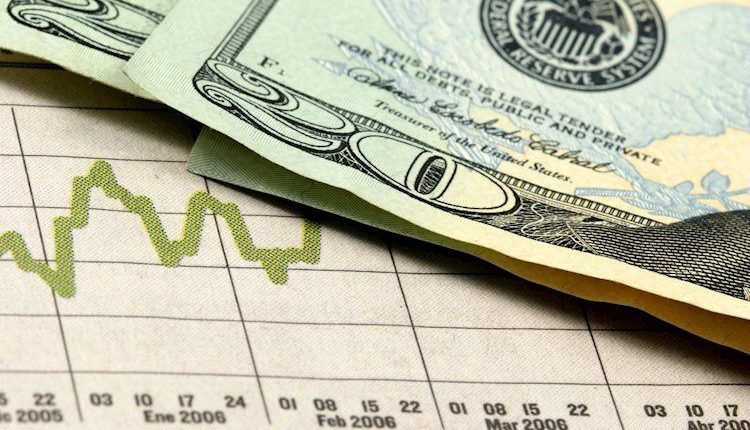- The US Dollar, measured by the DXY index, slides towards 106.10.
- US Treasury yields are increasing and may limit the USD’s losses.
- A positive market environment and Middle East fears easing weakened the USD.
- Wall St indexes are sharply rising.
- Markets have practically priced in a pause in the Fed’s meeting on Wednesday.
The US Dollar (USD) experienced a decline in Monday’s session to a low below 106.10 when gauged by the DXY Index, which measures the value of the USD against a basket of global currencies. The weakening of the USD was driven by risk-on flows, making it struggle to gather demand. As the economic calendar had nothing major to offer on Monday, investors’ focus shifts to the highlights for the rest of the week, including the Federal Reserve (Fed) Interest Rate Decision on Wednesday and Nonfarm Payrolls data on Friday. Both events have the potential to further impact the USD price dynamics.
The US economy is holding strong, helping the USD to find additional demand in the last few sessions. Despite this, the possibility of a 25 basis point hike in December, as shown by data from the CME Group FedWatch tool, continues to be low and hinders any substantial strengthening of the USD. Before at Wednesday’s meeting, a pause is primarily priced in, but investors will closely look upon Fed Chair Jerome Powell’s stance and outlook to continue placing their bets on the Fed’s next decisions.
Daily Digest Market Movers: US Dollar slides ahead of Fed decision, labor market data
- The USD DXY Index plunged towards 106.10, down by 0.40% on the day and fell to its lowest level since last Tuesday.
- The US Dollar struggles to hold the traction gained last week as buyers are taking profits.
- Investors continue assessing high-tier economic reports released last week ahead of the Fed’s decision on Wednesday.
- On Friday, the US Bureau of Economic Analysis reported that the Personal Consumption Expenditures (PCE) Price Index from September matched expectations. It came in at 3.4% YoY as expected, and aligned with its previous reading of 3.4%. The Core PCE declined to 3.7% YoY.
- On Thursday, data from the US Bureau of Economic Analysis showed that the Gross Domestic Product (GDP) preliminary estimates from Q3 exceeded expectations. The headline figure showed an annualised growth rate of 4.9%, beating the consensus of 4.2% and accelerating from the 2.1% growth seen in Q2.
- In the meantime, US Treasury yields are edging higher. The 2-year rate rose to 5.05%, while the longer-term 5 and 10-year rates advanced towards 4.83% and 4.91%, respectively. This may limit the Greenback’s losses.
- Ahead of the Fed’s decision on Wednesday, according to the CME Group FedWatch Tool, the odds of a 25 basis points hike in December are still low, around 20%.
Technical Analysis: Dollar bulls fail to defend 20-day SMA as momentum wanes
Analysing the daily chart, a neutral to bearish technical outlook is evident for the DXY Index, suggesting that the bulls are losing momentum. The Relative Strength Index (RSI) points towards a potential reversal as it weakens above its midline, while the Moving Average Convergence (MACD) histogram presents bigger red bars.
Additionally, the index failed to hold above the 20-day Simple Moving Average (SMA), and as bears step in, further downside may be on the horizon. That being said, the DXY is still above the 100-day and 200-day SMAs, indicating that on the broader picture, the bulls are still in command.
Supports: 106.00, 105.70, 105.50.
Resistances: 106.30 (20-day SMA), 107.00, 107.30.
Interest rates FAQs
Interest rates are charged by financial institutions on loans to borrowers and are paid as interest to savers and depositors. They are influenced by base lending rates, which are set by central banks in response to changes in the economy. Central banks normally have a mandate to ensure price stability, which in most cases means targeting a core inflation rate of around 2%.
If inflation falls below target the central bank may cut base lending rates, with a view to stimulating lending and boosting the economy. If inflation rises substantially above 2% it normally results in the central bank raising base lending rates in an attempt to lower inflation.
Higher interest rates generally help strengthen a country’s currency as they make it a more attractive place for global investors to park their money.
Higher interest rates overall weigh on the price of Gold because they increase the opportunity cost of holding Gold instead of investing in an interest-bearing asset or placing cash in the bank.
If interest rates are high that usually pushes up the price of the US Dollar (USD), and since Gold is priced in Dollars, this has the effect of lowering the price of Gold.
The Fed funds rate is the overnight rate at which US banks lend to each other. It is the oft-quoted headline rate set by the Federal Reserve at its FOMC meetings. It is set as a range, for example 4.75%-5.00%, though the upper limit (in that case 5.00%) is the quoted figure.
Market expectations for future Fed funds rate are tracked by the CME FedWatch tool, which shapes how many financial markets behave in anticipation of future Federal Reserve monetary policy decisions.
Read the full article here

